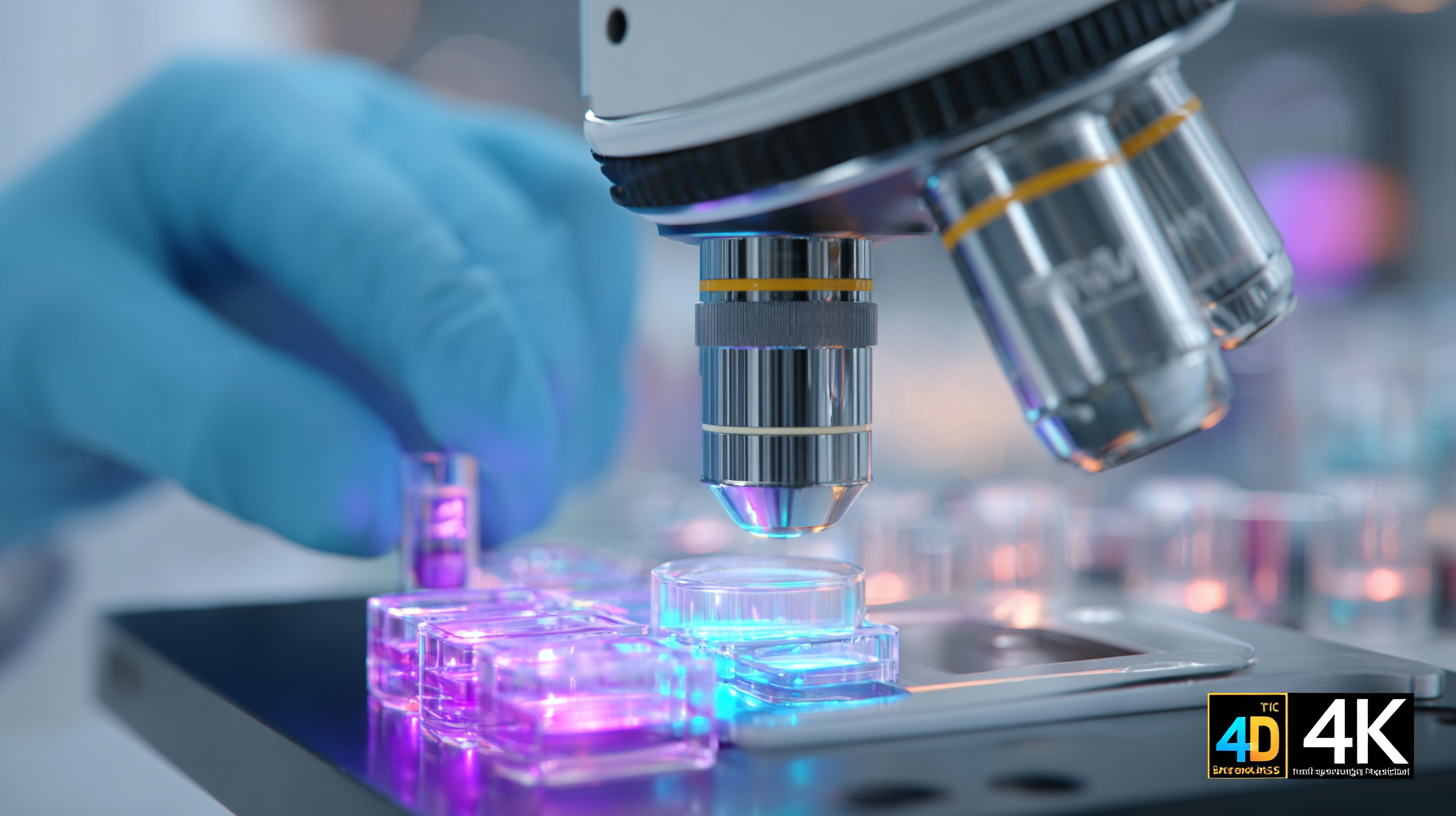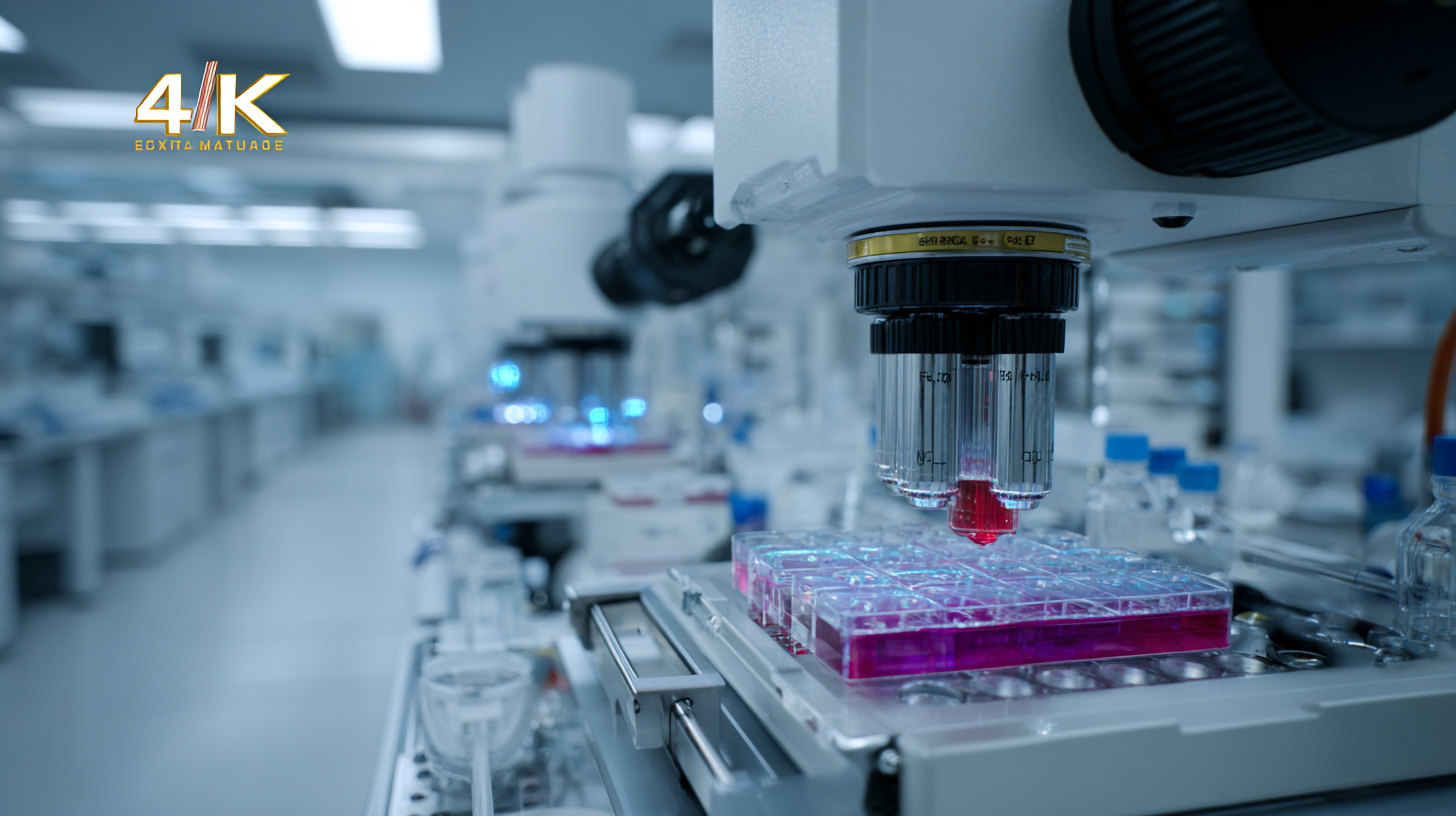

Maximizing Repair Cost Efficiency with Best Biotechnology Equipment for Future Innovations
In the rapidly evolving field of biotechnology, the efficient management of repair costs while utilizing state-of-the-art Biotechnology Equipment is essential for fostering innovation and maintaining competitiveness. According to a report from MarketsandMarkets, the global biotechnology equipment market is projected to reach USD 64.8 billion by 2025, growing at a CAGR of 8.3% from 2020. This growth is driven by advancements in research and development processes, as well as the increasing demand for biopharmaceuticals. As companies seek to enhance their operational efficiency, understanding how to optimize repair and maintenance expenditures on biotechnology equipment becomes crucial. By implementing best practices and leveraging innovative technologies, organizations can not only extend the lifespan of their equipment but also improve overall productivity and reduce downtime, paving the way for future breakthroughs in the biotechnological landscape.

Innovative Biotechnology Tools for Cost-Effective Repairs in 2025
In 2025, the landscape of biotechnology is set to transform repair processes dramatically through the adoption of innovative tools specifically designed to enhance cost-effectiveness. Emerging technologies such as CRISPR-based repair systems and bioengineered scaffolds will not only streamline repairs but also significantly reduce material costs. These tools offer precise targeting and minimal waste, ensuring that every resource is utilized efficiently. By integrating advanced data analytics with these biotechnological innovations, companies can anticipate repair needs and allocate resources more effectively, thus lowering operational costs.
Another exciting development is the rise of automated biotechnology labs equipped with cutting-edge robotics and AI. These systems enable faster and more reliable repair processes, minimizing the risks associated with human error and increasing throughput. As these technologies become more accessible, smaller firms can leverage them to compete with larger corporations, promoting a more equitable landscape in the bio-repair sector. As we move toward 2025, embracing these innovative biotechnology tools will be paramount for organizations aiming to maximize efficiency while keeping repair costs under control.
Maximizing Repair Cost Efficiency with Best Biotechnology Equipment for Future Innovations
| Equipment Type | Repair Cost ($) | Expected Lifespan (Years) | Maintenance Frequency (Times/Year) | Innovative Features |
|---|---|---|---|---|
| PCR Machine | 250 | 5 | 2 | Automated Temperature Control |
| Bioreactor | 1500 | 7 | 1 | Integrated Sensor Technology |
| Centrifuge | 800 | 10 | 3 | Low-Vibration Technology |
| Electrophoresis System | 500 | 4 | 2 | User-Friendly Interface |
| Spectrophotometer | 400 | 6 | 1 | Rapid Scanning Technology |
Emerging Trends Transforming Repair Efficiency in the Biotechnology Sector
In the rapidly evolving biotechnology sector, emerging trends are significantly transforming repair efficiency. As the industry continues to advance, the introduction of cutting-edge biotechnology equipment is crucial for maximizing repair cost efficiency. With a projected market growth, professionals are increasingly relying on innovative solutions that streamline processes and enhance productivity. Predictive maintenance is one such trend, enabling organizations to anticipate equipment failures before they occur, thus minimizing downtime.
To effectively implement these innovations, consider the following tips: First, invest in training for your team to ensure they are adept at using new technologies, fostering a culture of adaptability. Second, prioritize the adoption of predictive maintenance tools that can analyze real-time data and provide actionable insights. This not only enhances repair efficiency but also drives long-term savings. Finally, stay updated on market trends and technological advancements to continuously refine your approach. By embracing these strategies, companies can position themselves at the forefront of the biotechnology landscape, ensuring sustainable growth and innovation.
Strategic Approaches to Enhance Equipment Utilization and Minimize Costs
In the rapidly evolving field of biotechnology, the efficient utilization of equipment is critical for maintaining cutting-edge innovations while managing costs. To enhance equipment utilization, organizations should adopt a strategic approach that includes regular maintenance and timely upgrades. Regular checks can prevent costly breakdowns and extend the lifespan of devices, ensuring that researchers always have access to the highest-performing tools.
 Moreover, investing in modular systems allows for quick adaptations and expansions, vital for accommodating the fast-paced advancements common in biotech research.
Moreover, investing in modular systems allows for quick adaptations and expansions, vital for accommodating the fast-paced advancements common in biotech research.
Another effective strategy is to foster a culture of collaboration among teams. By sharing equipment and resources across departments, companies can maximize the use of existing technology rather than investing in underutilized assets. Implementing a centralized scheduling system can help in tracking equipment availability and usage, thereby reducing idle time. Additionally, partnerships with other organizations for shared access to specialized equipment can significantly lower expenses while promoting knowledge exchange. By focusing on these strategic approaches, biotechnology firms can minimize costs while maintaining the versatility necessary for future innovations.
Future-Proofing Repair Processes with Advanced Biotech Solutions
In the rapidly evolving field of biotechnology, future-proofing repair processes is critical for maintaining operational efficiency and cost-effectiveness. Advanced biotech solutions not only enhance repair capabilities but also ensure resilience in the face of technological advancements. According to a report by Deloitte, companies that leverage biotechnology in their processes can achieve a 25% reduction in repair costs while simultaneously improving turnaround times. This demonstrates that investing in top-notch biotechnology equipment can significantly impact a company's bottom line and long-term sustainability.
Tips for maximizing repair cost efficiency include investing in predictive maintenance tools that utilize AI and machine learning algorithms to foresee equipment failures. This proactive approach enables organizations to minimize downtime and unnecessary repairs. Furthermore, incorporating modular and upgradeable biotech systems allows for seamless integration of the latest innovations without the need for complete system overhauls, thus protecting your investment for the future.
Additionally, training personnel to be proficient in new biotech tools is vital. A McKinsey report highlights that companies with a skilled workforce can boost productivity by up to 35%. By fostering a culture of continuous learning and innovation, organizations can ensure their repair processes remain ahead of the curve, adapting seamlessly to the growing demands of the biotechnology landscape.
Maximizing Repair Cost Efficiency with Biotechnology Equipment
This chart illustrates the potential cost savings associated with different biotech solutions over a five-year period. The data highlights how investment in advanced biotechnology can lead to significant repair cost efficiency.
Integrating Sustainable Practices into Biotechnology Repair Strategies
In today’s rapidly evolving biotechnology landscape, integrating sustainable practices into repair strategies is crucial for optimizing efficiency and minimizing costs. Biotechnology equipment often represents a significant investment for companies, making it essential to ensure their longevity through effective repair methods. By prioritizing sustainable practices, organizations can reduce waste and energy consumption while extending the lifecycle of their equipment.

One effective approach is adopting eco-friendly materials and techniques in repair processes. Utilizing biodegradable components and non-toxic cleaning agents not only safeguards the environment but also enhances the safety of personnel involved in the repair. Furthermore, implementing a systematic approach to maintenance—such as predictive analytics—can help identify potential issues before they become costly problems, thereby minimizing downtime and resource usage.
Moreover, collaborating with manufacturers to develop sustainability-focused repair regimens can lead to innovations that further advance the biotechnology field. As the demand for greener practices continues to rise, companies that lead the way in sustainable repair strategies will not only improve their cost efficiency but also bolster their reputation as responsible innovators in biotechnology. Emphasizing these practices ensures a more resilient future while paving the way for advancements that benefit both industry and the planet.





